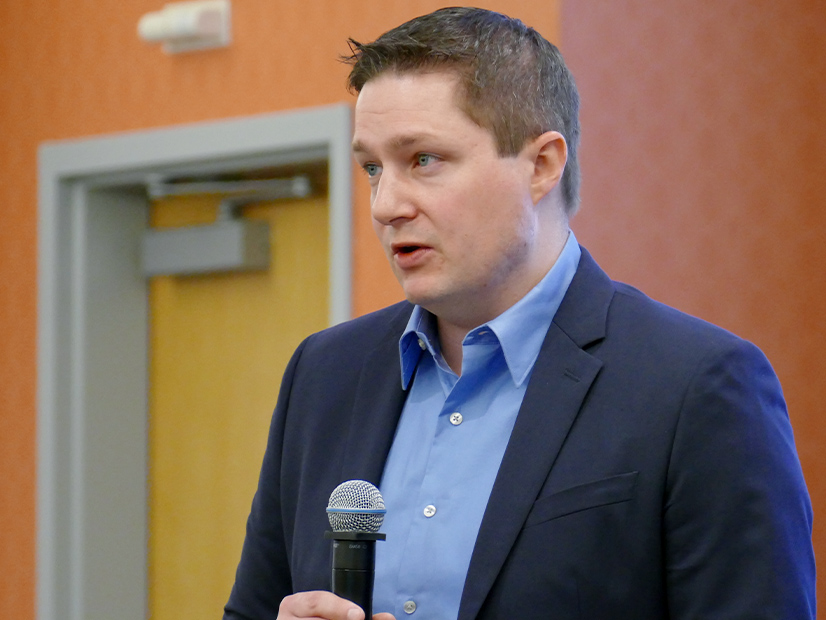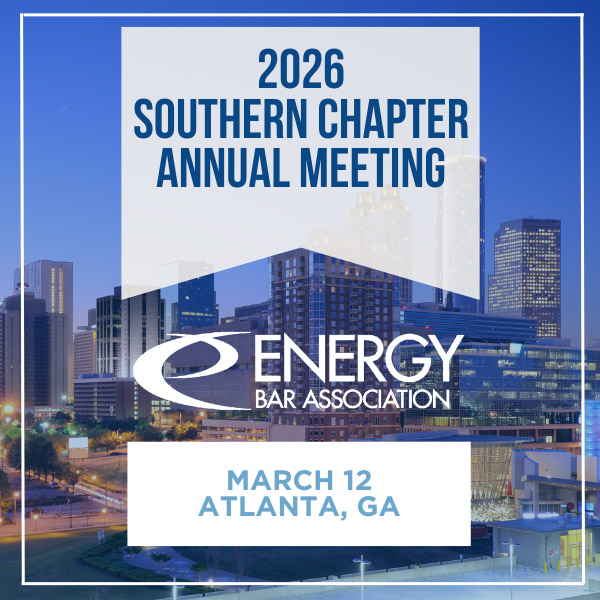Expanded Demand Response Modeling Endorsed
PJM’s Market Implementation Committee narrowly endorsed a PJM proposal to use effective load-carrying capability (ELCC) to model the availability of demand response resources in all hours, along with other changes to how DR accreditation is determined.
The package received 77% support for implementation in the 2027/28 delivery year, which shrunk to 54.3% for implementation in the preceding year, while a third proposal from the Independent Market Monitor received 40.1% support. (See “Discussions Continue on Demand Response Availability Window,” PJM MIC Briefs: Jan. 8, 2025.)
PJM’s Pat Bruno said the proposal seeks to capture more of the reduction capability DR can provide and apply performance requirements to those hours. Modeling of curtailment capability currently is limited to 6 a.m.-9 p.m. in the winter and 10 a.m.-10 p.m. in the summer, which DR providers argue fails to account for the growth of consumers with flat load profiles and how the DR resources interact overall with reliability risks occurring during a larger number of winter hours.
Calpine’s David “Scarp” Scarpignato said the proposal would be cutting it too close to the auction.
“Even if it looks like it’s financially better for us, the disruption is too much. … It’s not that we oppose the proposal; it’s just that there’s a reason there’s pre-auction schedules,” he said.
Representing DR providers, Bruce Campbell of Campbell Energy Advisors said while he’s sensitive to concerns about uncertainty, the current setup represents a barrier to entry for DR that is excluding resources at a time when PJM says new entry is needed.
The proposal also would revise how DR resources’ winter peak load (WPL) is determined to be measured fleetwide at a point that aligns capability with identified system risks, in this case the hour ending at 9 a.m. The status quo allows the WPL for individual resources to be measured at their highest output whatever time of day that may be, which Bruno said can result in a fleetwide WPL that never can be achieved.
When modeling reliability risks under the ELCC framework, the proposal also would create a classwide load profile for DR capability in winter and derate the amount of curtailment expected by hour. Bruno said no change to summer modeling is needed, since reliability risks tend to be concentrated in a few hours correlated with peak loads, whereas winter risk is more diffused.
Given the short amount of time between the beginning of pre-auction activities for the 2026/27 Base Residual Auction (BRA) and the significant number of market design changes pending at FERC, several stakeholders said PJM instead should target the 2027/28 delivery year, scheduled to be conducted in December. Curtailment service providers countered that some locational deliverability areas (LDAs) cleared short of the reliability requirement in the 2025/26 BRA and there are concerns that could widen in the 2026/27 auction. Expanding the amount of DR considered available could add several gigawatts to the market, they said.
Bruno said PJM intends to seek same-day endorsement during the Feb. 20 meeting of the Markets and Reliability Committee to allow for the package to be implemented for the 2026/27 delivery year, if stakeholders endorse that alternative.
The Monitor’s package would base accreditation on historical performance of DR resources akin to how generation is modeled and rated. It also would use ongoing analysis of load data to determine resource WPL and aim to account for the possibility that load may exceed WPL at the time that a performance assessment interval (PAI) is initiated. A separate stakeholder process would be initiated to consider the role DR plays in the capacity market overall.
PJM Discusses Market Performance During January Winter Storms
Stakeholders said PJM’s markets and operations teams performed well in maintaining reliability during two cold snaps seen in January, but more work is needed to ensure that needs during emergency conditions are reflected in economics. (See “Performance Strong During Record Winter Peak,” PJM MRC/MC Briefs: Jan. 23, 2025.)
Senior Dispatch Manager Kevin Hatch said forecasts showed significant increases in load as cold weather began Jan. 18, with Jan. 22 setting a new winter peak of 145,060 MW. PJM initiated several emergency procedures ahead of the storms, including the use of conservative operations to commit resources — mainly gas generators — thought to be at risk of underperforming. The RTO added conservative operations to its toolbelt after December 2022’s Winter Storm Elliott, when significant amounts of gas generation failed to perform. Gas operators have sought to lay the blame on how PJM dispatches units and have largely supported the ability to make out-of-market commitments.
PJM principal fuel supply strategist Brian Fitzpatrick said last month’s Martin Luther King Jr. Day weekend proved to be challenging because of warm weather Friday, Jan. 17, that shifted to a winter storm with subzero temperatures in some regions. Ensuring the availability of gas resources is especially challenging on such weekends since fuel delivery on pipelines tends to be sold in ratable take packages, which can cause generation owners to lose money if gas providers don’t follow through on procurement contracts.
Constellation Director of Wholesale Market Development Adrien Ford said PJM’s conservative operations declaration resulted in significant uplift payments to generators, creating unhedgeable costs for load-serving entities. PJM’s response to the storm was successful from a reliability perspective, but not economically, she said.
PJM Senior Director of Market Design Rebecca Carroll said the Reserve Certainty Senior Task Force (RCSTF) is trying to address the fact PJM does not have an in-market way of committing resources under those circumstances.
First Read on Black Start Compensation Proposals
PJM and the Monitor presented first reads on competing proposals to revise how black start units are compensated under the Base Formula Rate (BFR). (See “PJM Presents Changes to Black Start Compensation,” PJM MIC Briefs: Jan. 8, 2025.)
The PJM proposal would remove the net cost of new entry (CONE) component of the BFR calculation to instead use a fixed value derived from the average net CONE between 2020 and 2024 with an inflation escalator. The change was spurred by analysis finding that net CONE could fall to zero in some LDAs in the 2026/27 BRA under the shift to a combined cycle reference resource. While PJM has asked FERC to allow it to revert the reference resource back to a dual-fuel combustion turbine, PJM has argued net CONE values could remain low and impact black start compensation.
The BFR is used to compensate black start units that do not require new capital investments to provide black start service, whereas the Capital Recovery Rate (CRR) is used when upgrades are required. PJM’s Glen Boyle said many resources already providing the service could pull their capability if low net CONE values reduce compensation under the BFR. Requiring new resources to make costly upgrades to provide black start service, such as installing diesel generators, could drive up costs he said.
Monitor Joe Bowring’s proposal would temporarily pay black start units an RTO-wide net CONE value while stakeholders embark on a long-term effort to untie the BFR from net CONE entirely to instead focus on the ongoing cost to provide the service.
Bowring has said PJM has acknowledged that net CONE does not relate to black start costs; however, it proposes to arbitrarily create a static value derived from net CONE with an inflation modifier to be the basis of revenues. Rather than changing the rule in an “arbitrary and [illogical] fashion,” he said PJM should let market sellers tell PJM their cost so it can ensure they are compensated with a fair return.
Issue Charge Seeks to Address Offer Capping Advance Commitments
PJM presented a problem statement and issue charge focused on the potential for market power and manipulation when resources are scheduled in advance of the day-ahead energy market.
Key work activities (KWAs) include education on how resources are scheduled ahead of the day-ahead market; governing document revisions related to how those units are scheduled; possible market power mitigation protections; and aligning how the process is detailed across the governing documents.
Two phases are envisioned: the first drafting a proposal on how to select which schedule should be committed in advance of the DA market, and the second focusing on incorporating fuel costs in cost-based offers. Day-ahead and real-time offer capping would be out of the issue charge’s scope.
Paul Sotkiewicz, president of E-Cubed Policy Associates, said he finds it troubling PJM has implemented processes detailed in the manuals that are not appropriately defined in the governing documents and is attempting to codify them after the fact. He said the wording of the problem statement also gives the impression there have been specific accusations of market power abuse.
Other Committee Business
The MIC endorsed by acclamation a second slate of manual revisions conforming to FERC’s order granting PJM’s changes to risk modeling, accreditation and resource testing. The proposed revisions to Manuals 11, 14D, 18 and 28 would rewrite the rules for testing resource capability in summer and winter and operational testing, and also require that dual-fuel generators offer schedules with both fuels into the energy market.
PJM’s Joseph Tutino presented revisions to Manual 11 drafted through the document’s periodic review. The changes include grammatical and spelling corrections, updating web links and removing outdated references to the day-ahead scheduling reserve.



